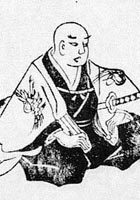Ihara Saikaku
Ihara Saikaku Biography
Ihara Saikaku was a Japanese poet and creator of the "floating world" genre of Japanese prose (ukiyo-zōshi). He was a man of many talents. Not only did he have a penchant for poetry, but he had a gift for writing edgy plays and novels with a radical flair. He is known for taking risks in his works. Biography Born as Hirayama Tōgo (平山藤五), the son of a wealthy merchant in Osaka, he first studied haikai poetry under Matsunaga Teitoku, and later studied under Nishiyama Sōin of the Danrin School of poetry, which emphasized comic linked verse. Scholars have described numerous extraordinary feats of solo haikai composition at one sitting; most famously, over the course of a single day and night in 1677, Saikaku is reported to have composed at least 16,000 haikai stanzas, with some sources placing the number at over 23,500 stanzas. Later in life he began writing racy accounts of the financial and amorous affairs of the merchant class and the demimonde. These stories catered to the whims of the newly prominent merchant class, whose tastes of entertainment leaned toward the arts and pleasure districts. Life In 1642, Ihara Saikaku was born into a well-off merchant family in Osaka. From the age of fifteen Saikaku had begun to compose haikai no renga (linked verse). In 1662 at the age of twenty Saikaku had become a haikai master. Under the pen name Ihara Kakuei, Saikaku began to establish himself as a popular haikai poet. By 1670 Saikaku had developed his own distinctive style of haikai poetry. In essence his haikai style relied on the use of colloquial language to depict contemporary chōnin life. Furthermore, during this time Saikaku also owned and ran a medium sized business in Osaka. In 1673 Saikaku had changed his pen name to the one we recognise today. However, the death of his dearly beloved wife in 1675 had an extremely profound impact on Saikaku. A few days after her death in an act of grief and true love Saikaku started to compose a thousand-verse haikai poem in a matter of twelve hours. When this work was published it was called ‘Haikai Single Day Thousand Verse’ (Haikai Dokugin Ichinichi). It was the first time that Saikaku had attempted to compose such a lengthy piece of literature. The overall experience and success that Saikaku received from composing such a mammoth exercise has been credited with sparking the writer’s interest in writing novels. However, shortly after his wife’s death the grief stricken Saikaku had decided to become a lay monk and began to travel all across Japan, thus leaving behind his three children (one of whom was blind) to be cared for by his extended family and his business by his employees. He started his travels after the death of his blind daughter. In 1677 Saikaku returned to Osaka and had learnt of the success his thousand-verse haikai poem had received and from then on pursued a career as a professional writer. Initially Saikaku continued to produce haikai poetry, but by 1682 he had published his first of many fictional novels ‘The Life of an Amorous Man’. As Saikaku’s popularity and readership began to increase and expand across Japan so did the amount of literature he published. When he died in 1693 at the age of fifty-one Saikaku was one of the most popular writers of the entire Tokugawa period. Yet at the time his work was never considered high literature because it had been aimed towards and popularised by the chonin. Nevertheless, Saikaku’s work is now celebrated for its significance for developing Japanese fiction literature.)
The Best Poem Of Ihara Saikaku
A Sake Barrel
A sake barrel,
Born without hands, makes merry —
Cherry blossom time.
